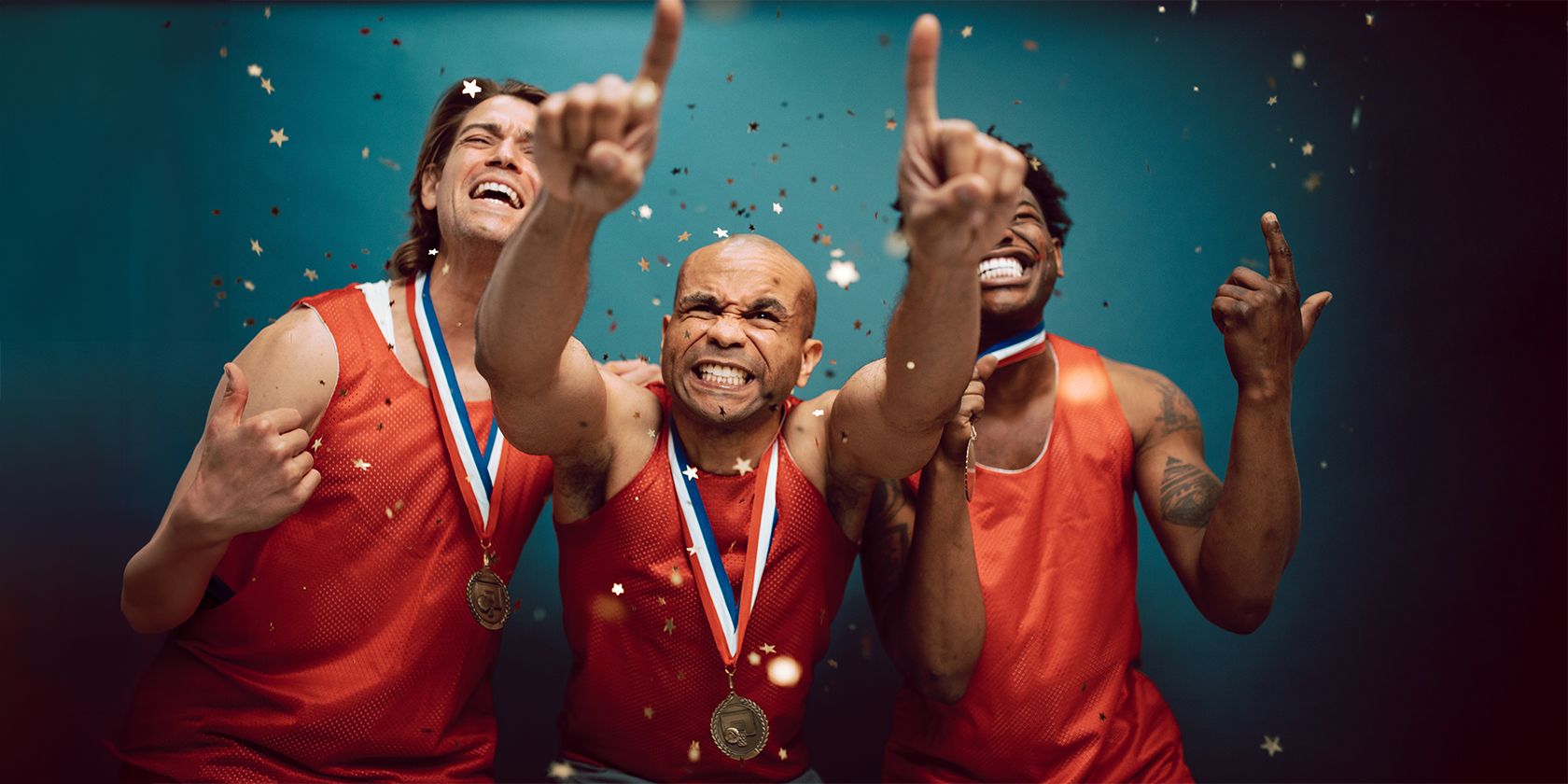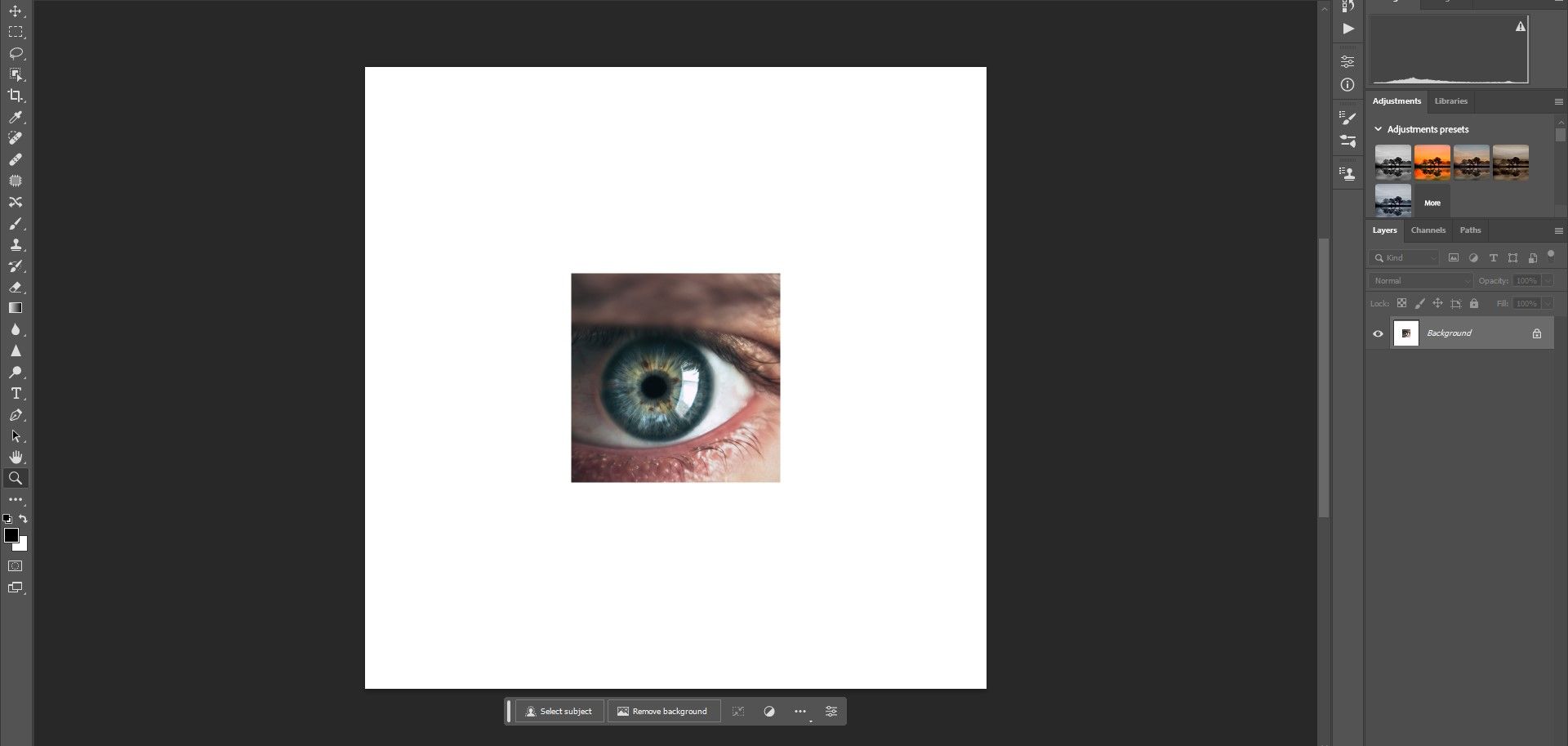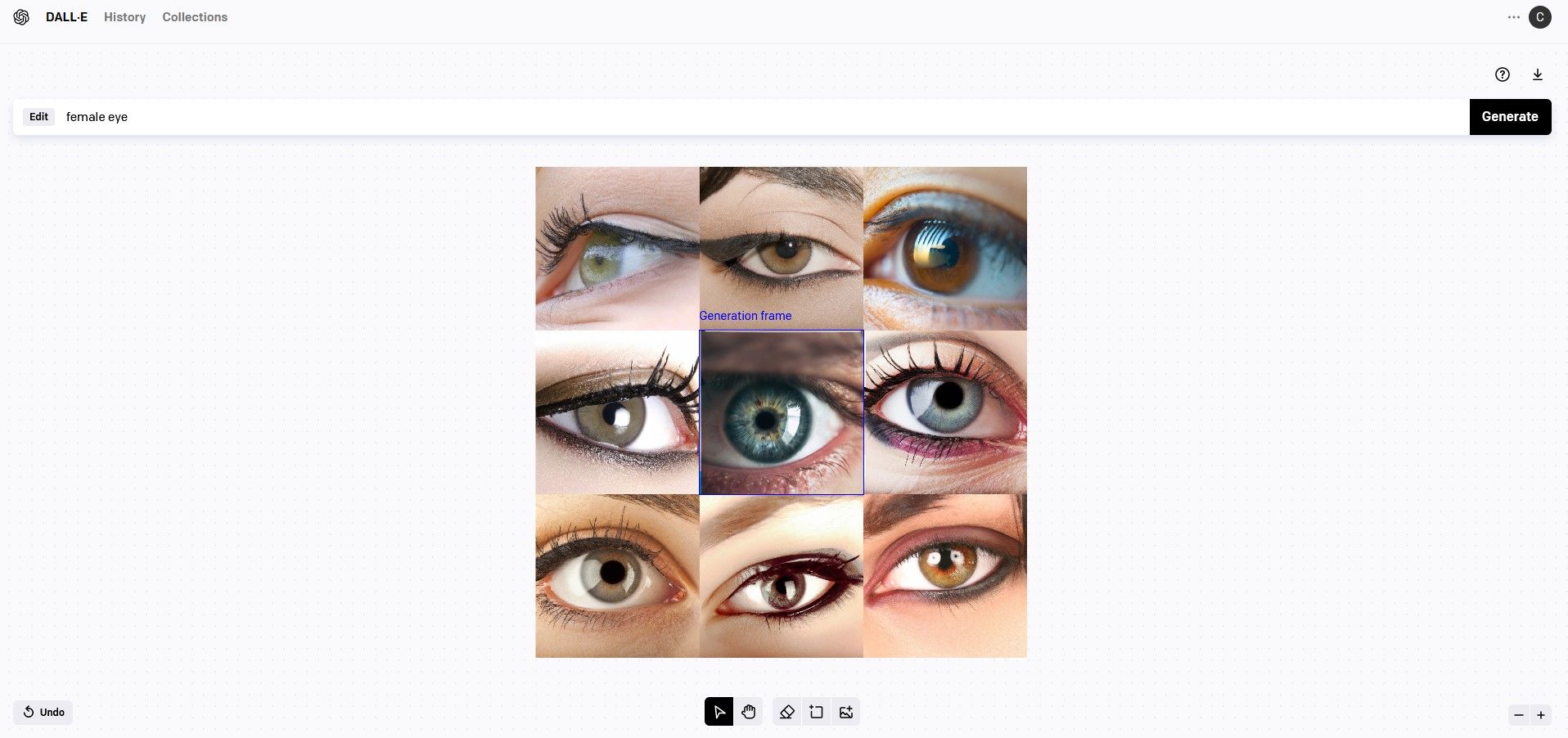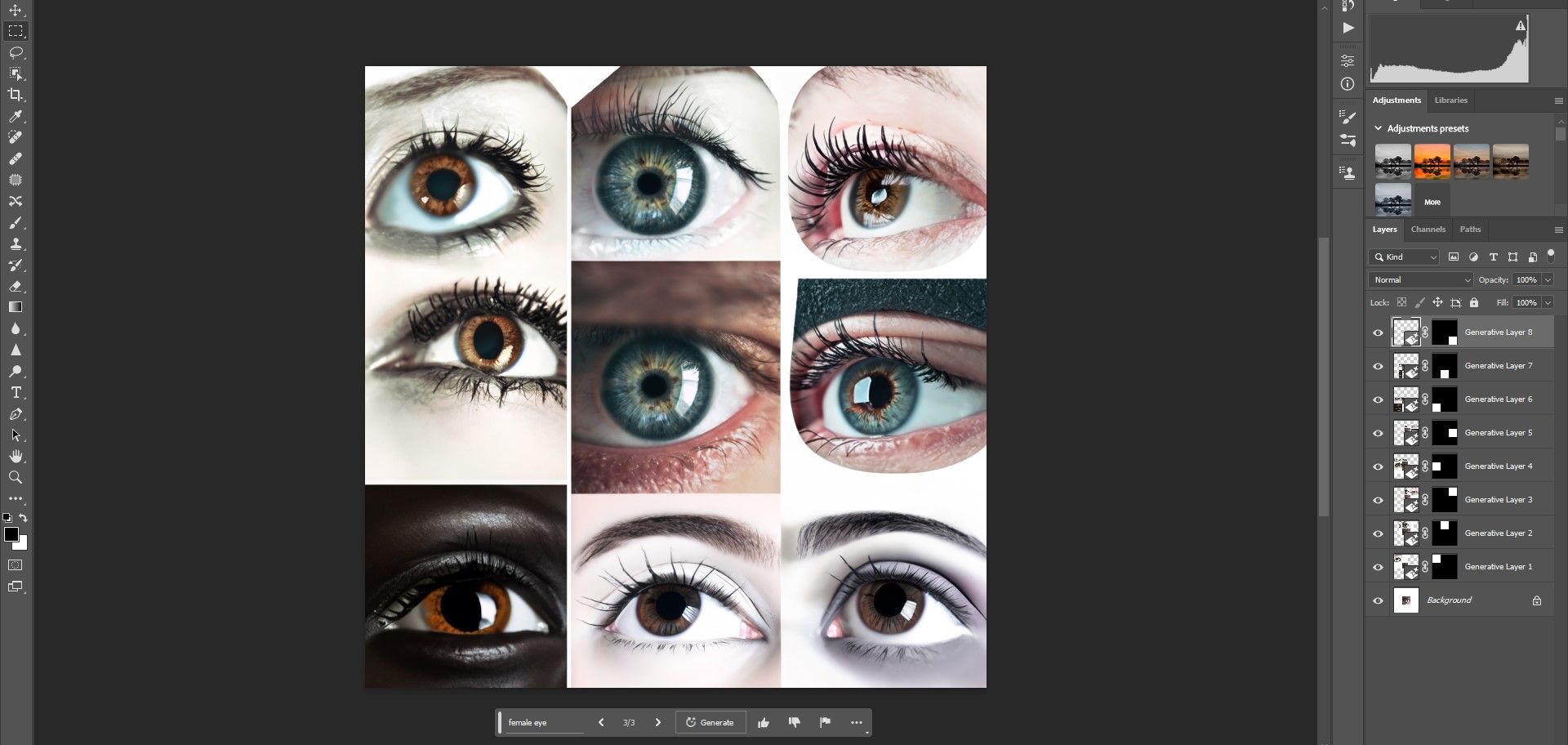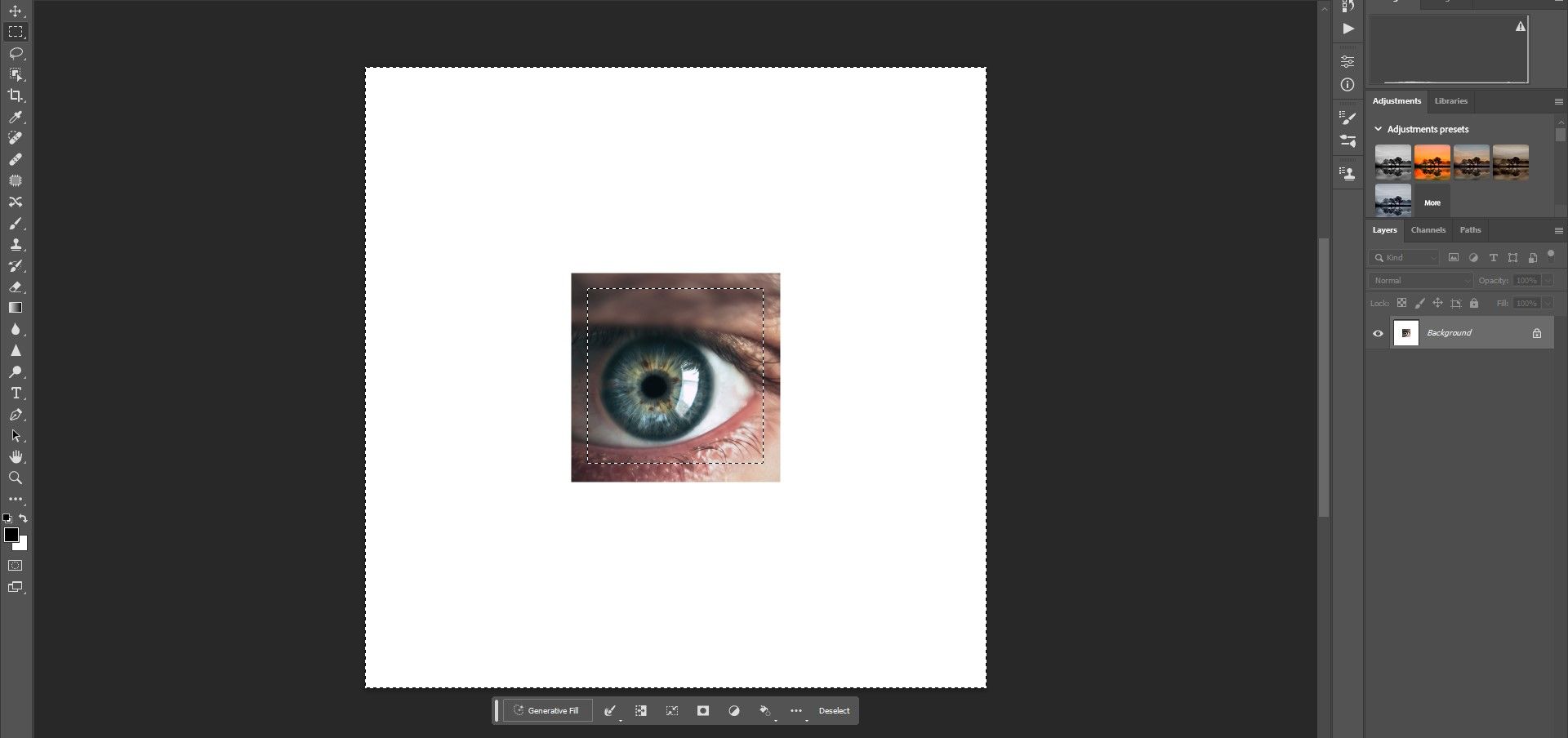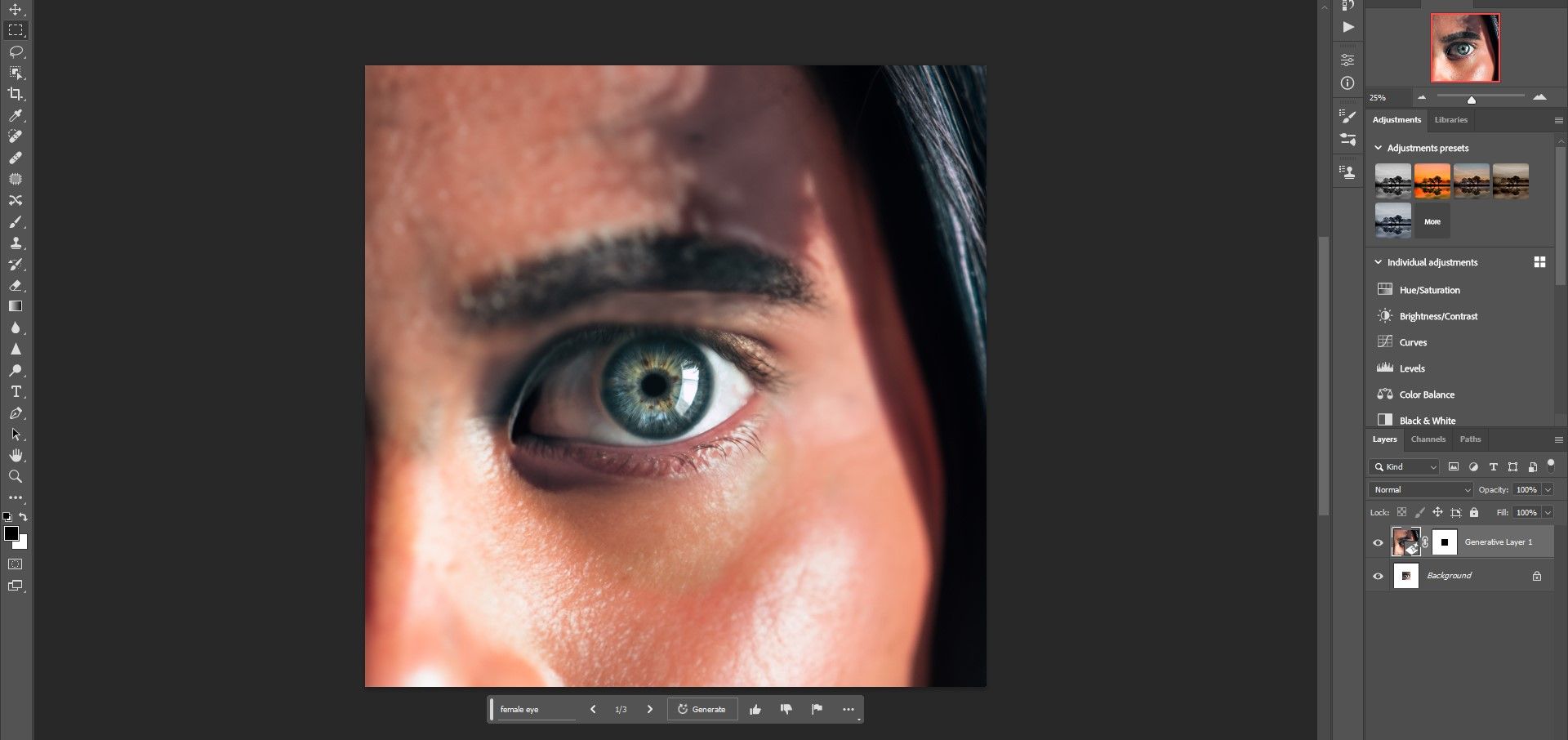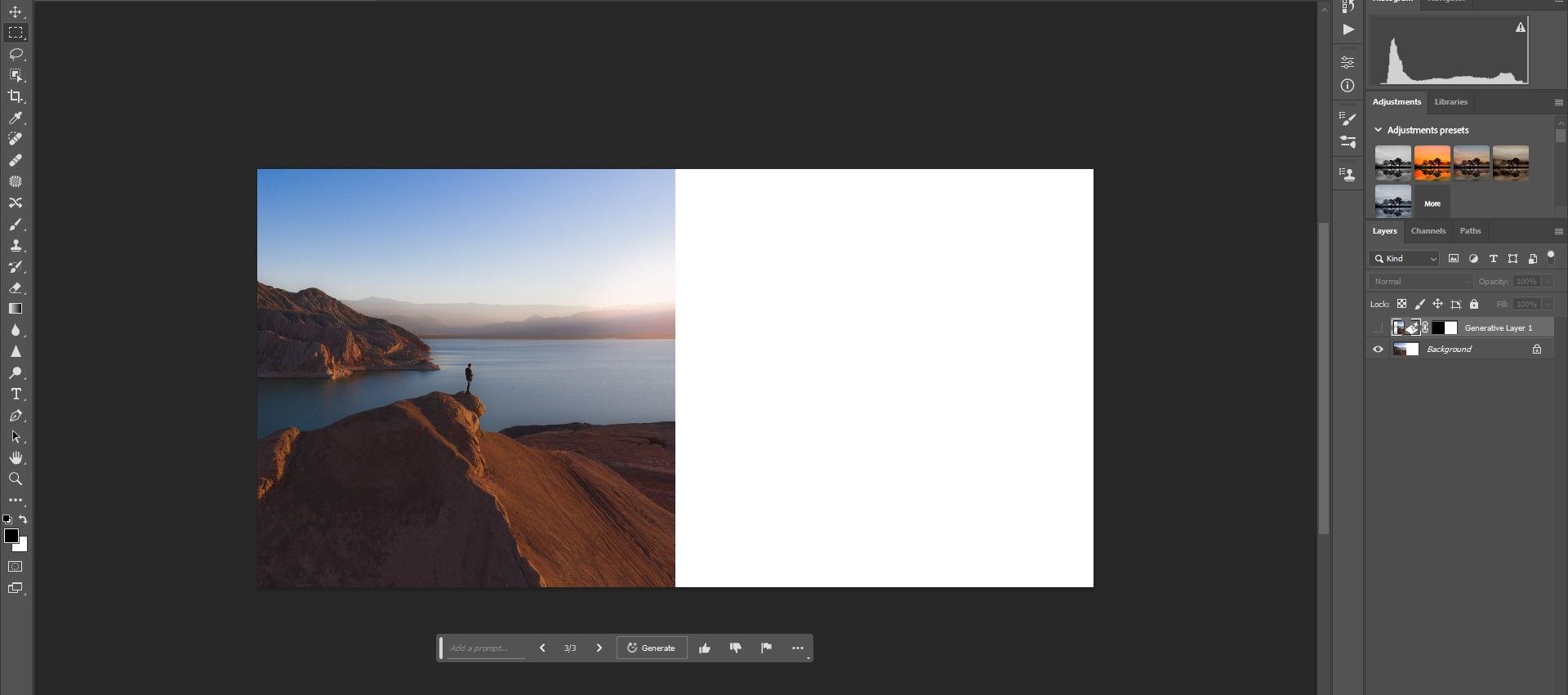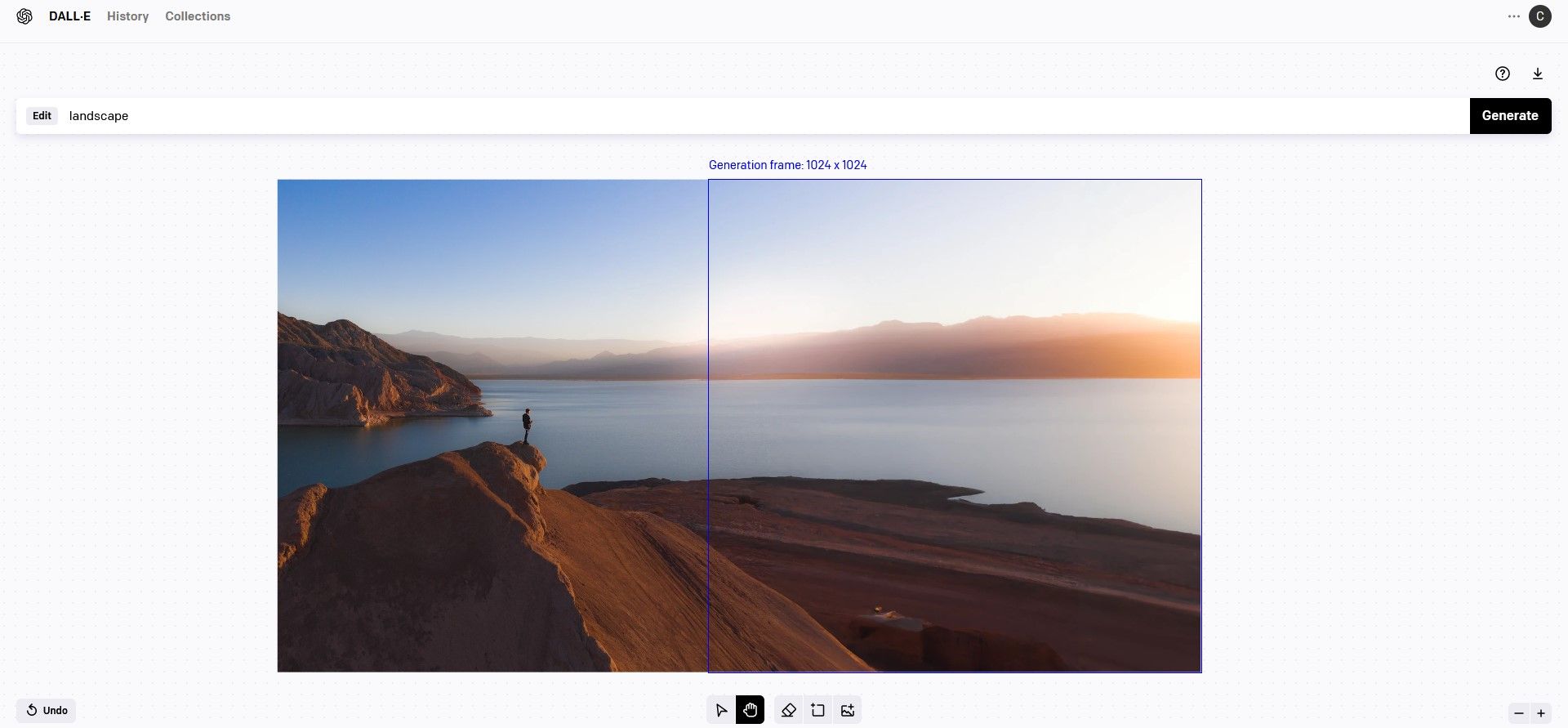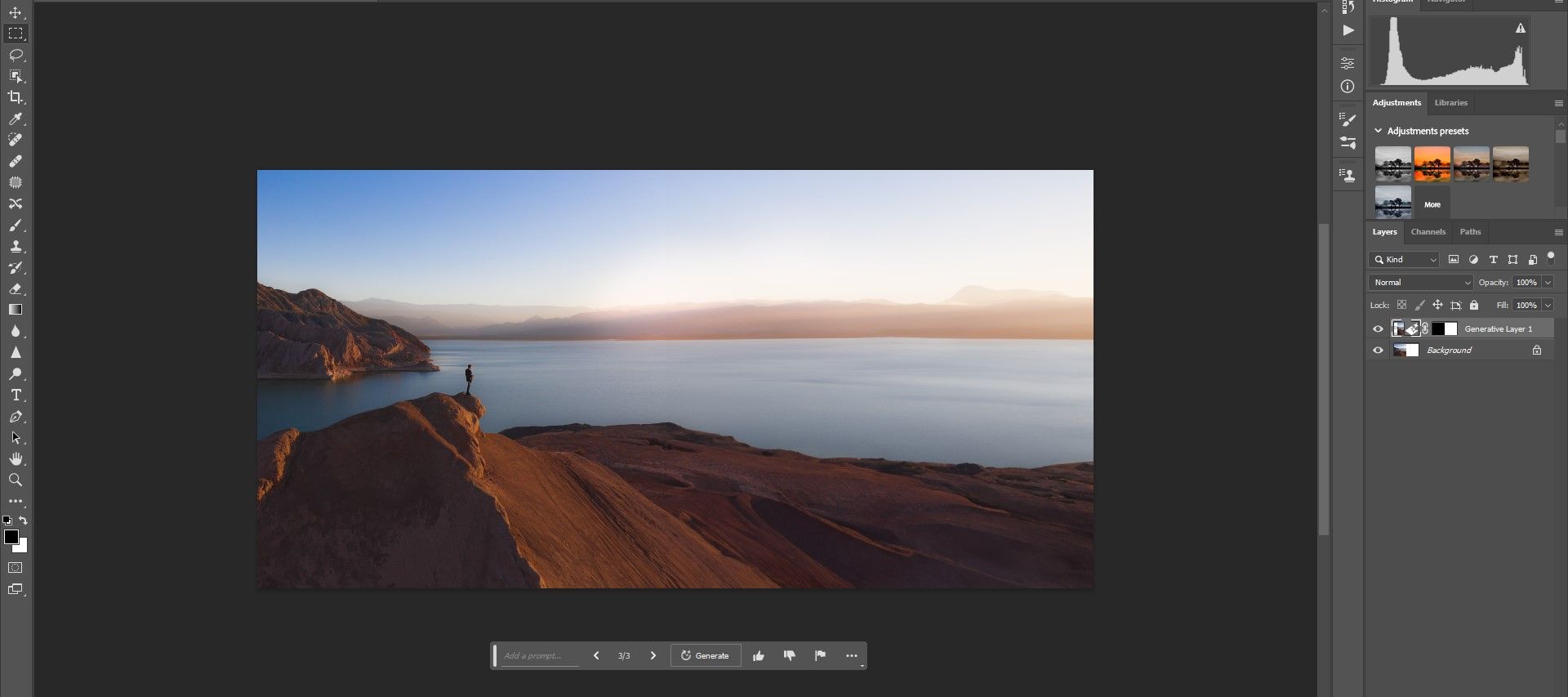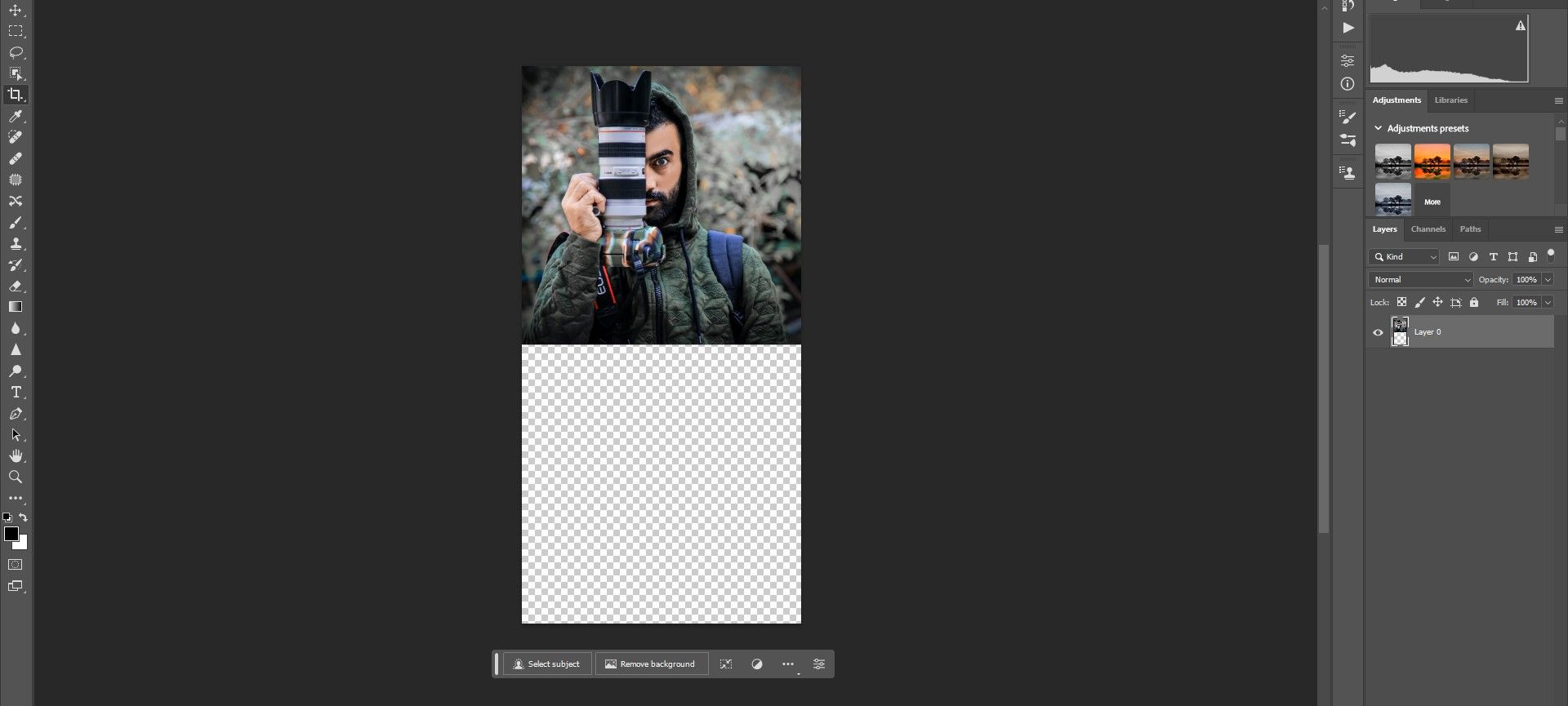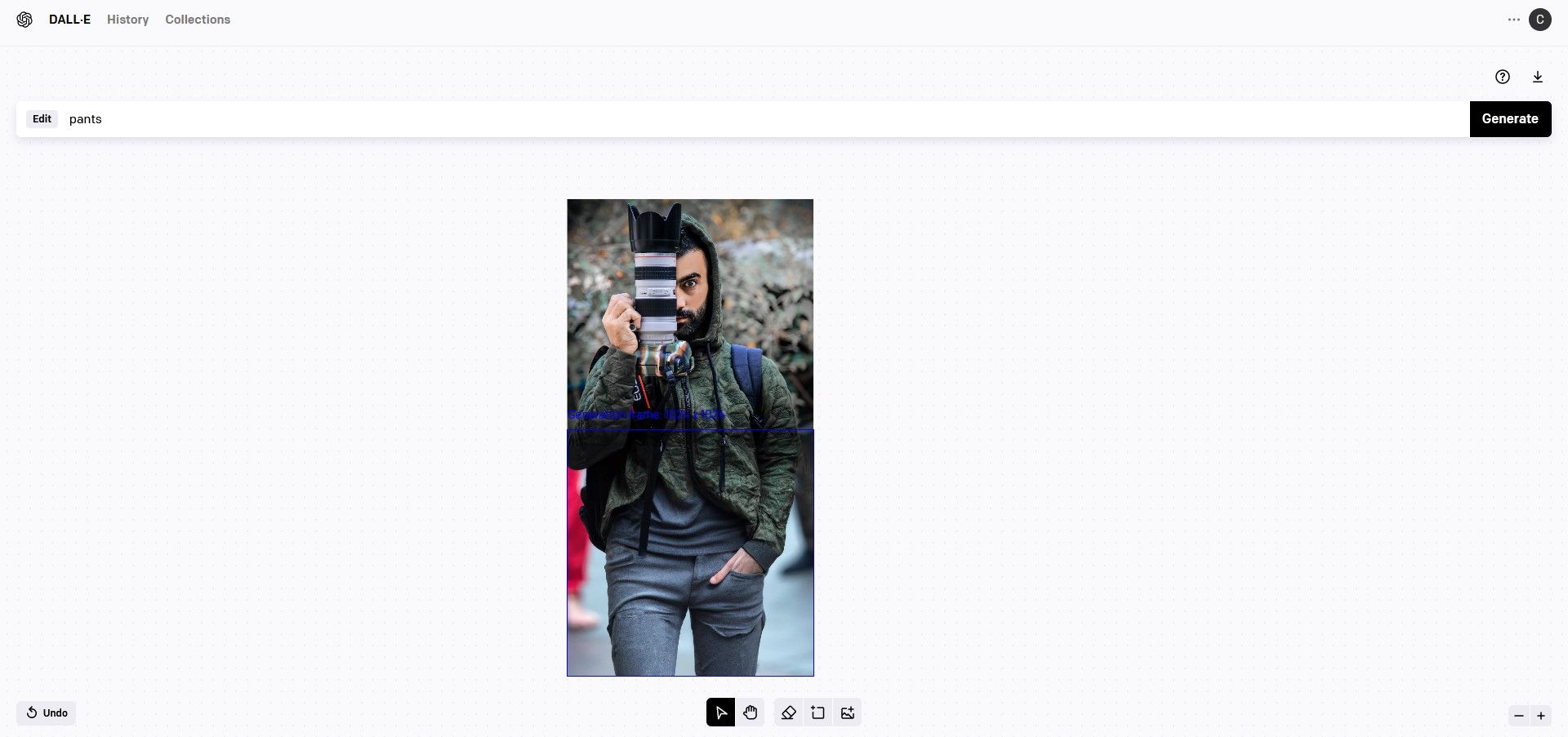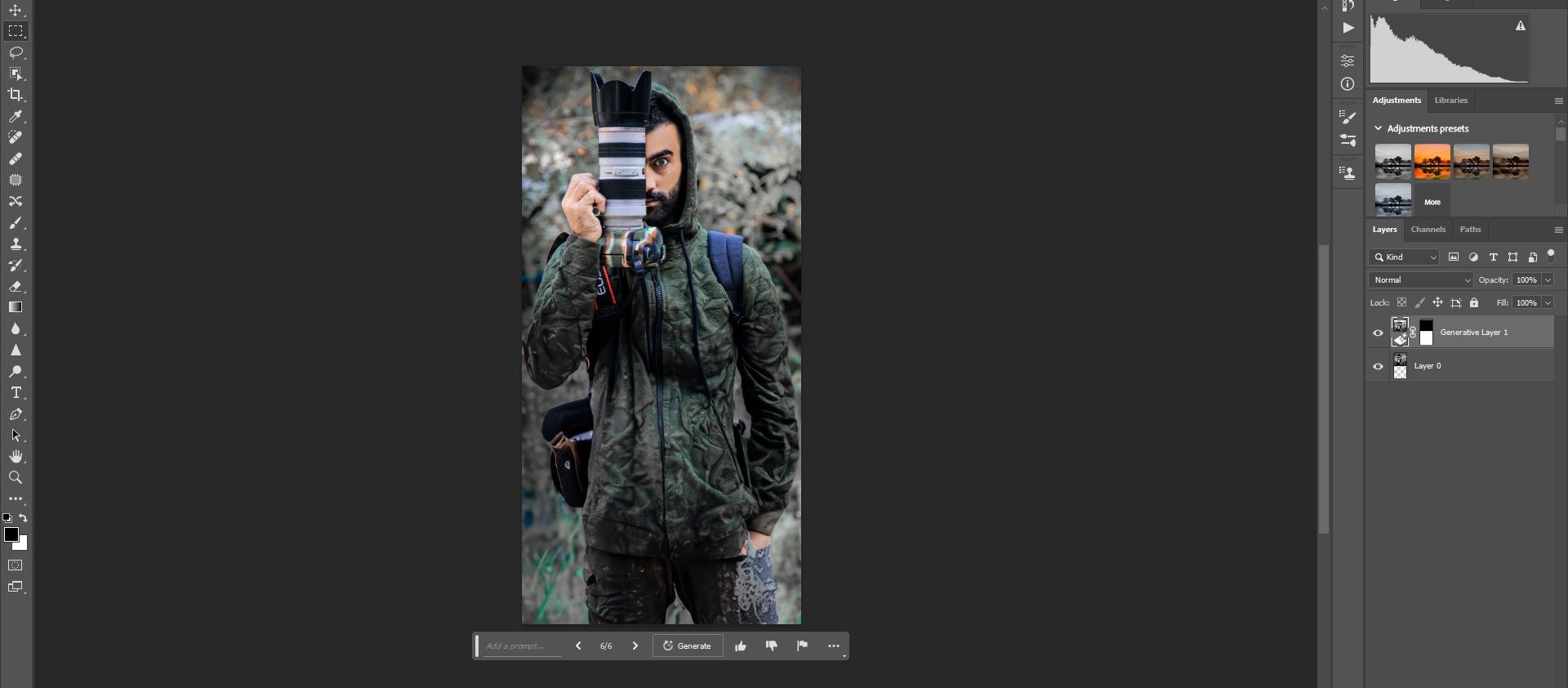One of the most useful features of leading AI image generators is the ability to extend an image to another size and ratio. No longer are creatives "stuck" with the images they've got; you can create new images custom-tailored from the originals. Even from a single eye, artificial intelligence can fill out an entire person if we so choose.
In this article, we'll compare the capabilities of DALL-E's Outpainting feature and Photoshop's Generative Fill to see which app can extend an image better.
How to Access Generative Fill and Outpainting
You can access DALL-E's Outpainting feature from DALL-E's website. Just choose Try Outpainting from the menu in the upper-right corner. See our full guide on how to use Outpainting in DALL-E 2.
To access Photoshop's Generative Fill, you must be an Adobe subscriber. You can sign up for the Beta on Adobe Firefly's website or use Photoshop Beta. See our full guide on how to use the Generative Fill tool in Photoshop.
Let's jump into the comparisons!
1. Extending an Image of an Eye
Let's begin our comparison between Photoshop's Generative Fill and DALL-E's Outpainting with the most extreme example; extending the frame from a close-up of an eye. We started with a partial eye with a resolution of 1,024 x 1,024 pixels and expanded the crop to include eight same-size boxes around it.
It turns out that both Photoshop and DALL-E couldn't extend the center eye into a complete image. Instead, they could only reproduce eight individual eyes extended from the original eye.
Outpainting:
Generative Fill:
To be fair, this example only illustrates the current technology. Both applications are unable to examine the entire frame in this manner and produce a coherent extension of an eye.
But if set up differently, which can't be done in Outpainting currently, Photoshop's Generative Fill can extend the entire eye if only one selection is made from around the eye. Using the Rectangular Marquee Tool, we made a selection within the frame of the eye and then inversed the selection.
Generative Fill selection:
Then we just entered "female eye" as the prompt and generated a coherent extension.
Generative Fill full extension:
The only current drawback to this method is that the entire extension around the original eye has a maximum resolution of 1,024 pixels on the longest side. This produces a soft or slightly out-of-focus effect. And if you zoom in, you'll see that there's a lack of resolution compared to the original 1,024-pixel version.
2. Extending a Landscape Image
For our second comparison, we'll take a square 1,024-pixel image and extend it out to roughly twice its size as a horizontal version that's more apt for a landscape photo. We played to the strengths of both applications to produce the best results.
Outpainting:
We extended the generation frame out a couple of times, making sure there was good overlap so that DALL-E could make use of the pixels. "Landscape" was entered as the prompt. Used in this manner, Outpainting does a great job.
Generative Fill:
In Photoshop, we just overlapped one additional frame and produced a seamless extended frame. Generative Fill is very capable of producing such landscape images.
3. Extending an Image of a Person
People are always a bit tricky to extend, both their clothing and limbs. At the time of writing, changing clothing with Generative Fill is possible if you don't mind different clothing as a result. Basically, don't expect to just change the color of your wardrobe. And, at present, all AI image generators have issues with hands.
But let's put Generative Fill and Outpainting to the test. Can you extend a picture of a person cropped at the chest and end up with something usable? Let's find out. Once again, we've used a 1,024-pixel square image, and we're seeking to extend the image toward the man's legs.
Outpainting:
DALL-E's Outpainting did a fairly decent job filling in the details. It didn't always catch the fact that the man had one arm raised and would sometimes generate two hands in the pocket. But that's why there are four versions to choose from and the option to generate more (at the cost of credits).
Generative Fill:
Generative Fill did a pretty decent job filling in the details too. It doesn't look perfect, maybe just passable. But as opposed to DALL-E's Outpainting, you can keep generating new versions and then make minor corrections without spending any more money on credits.
Which Is the Best, Generative Fill or Outpainting?
From the examples here and further testing, Generative Fill and Outpainting appear to be close in how they extend different types of images. They each have their limitations, but the quality of generations appears too close to call. Neither one stands out as an obvious winner in every comparison we made based on just a couple of attempts to extend images.
Photoshop's Generative Fill does have a few big advantages over DALL-E's Outpainting, however, especially if you're already a Photoshop user with an Adobe subscription.
- You can make unlimited generations (at present) and don't need to pay for extra credits.
- Generative Fill is more flexible because you can make use of Photoshop's selection tools for faster and more precise generations.
- You also have access to Photoshop as one of the industry's leading photo editors to make further corrective and creative adjustments.
Hats off to Photoshop and DALL-E for their respective journeys so far. Both apps can do the job of extending images quite well.
Users Benefit From Competition
Users of Generative Fill and Outpainting will benefit from the competition between companies like Adobe and OpenAI working around the clock to improve their AI systems. As image generation quality improves, so will the features and tools that assist us in customizing our images. Which app do you like the best for extending images?

